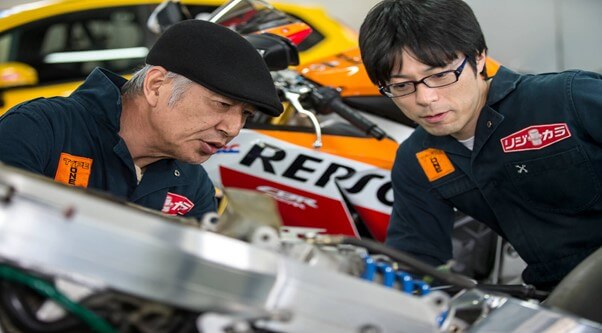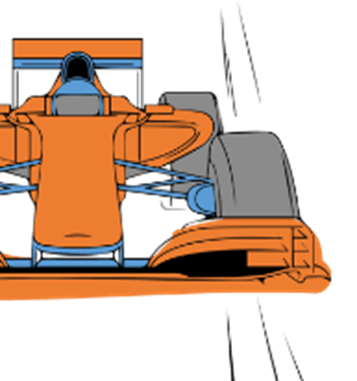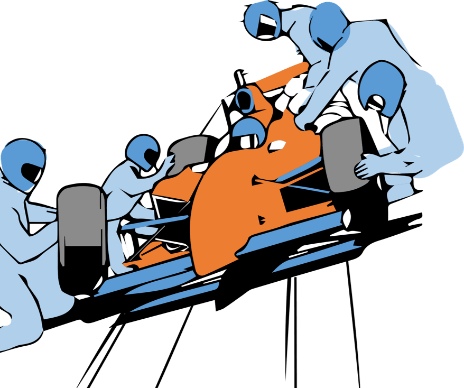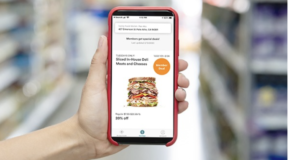
There are many sports analogies and terms that we use in our day-to-day communications. In fact, sports itself appears to be a universal language of its own. Coming from a family of professional golfers - it was expected that I would follow in their footsteps. Only my passion is motorsports, specifically cross-country car rallies. My experience with motorsports is remarkably like my experience with working on NaaS. These are some of the lessons I have learned:
 1. The Arena – Jumping into motorsports as an outsider, with no experience or friends in the sport, was downright silly. Having zero hands-on knowledge of the sport and spending a lot of time and energy learning the ropes from the ground up could have been prevented. After struggling there was the realization that there were many people and organizations that should have been leveraged and were willing to help in my journey. Unfortunately, I did not take advantage of their training and knowledge.
1. The Arena – Jumping into motorsports as an outsider, with no experience or friends in the sport, was downright silly. Having zero hands-on knowledge of the sport and spending a lot of time and energy learning the ropes from the ground up could have been prevented. After struggling there was the realization that there were many people and organizations that should have been leveraged and were willing to help in my journey. Unfortunately, I did not take advantage of their training and knowledge.
Similarly, NaaS is an entirely new offering in a newly defined market. Though NaaS has been an industry term for many years, the world is moving towards a consumption-based services model. Many still think of as-a-service in terms of software or compute and storage such as SaaS or IaaS. However, with IaaS and SaaS, the networks physically live in the edge, not the Cloud. NaaS provides partners an opportunity to adapt their business model quickly to support the new way that customers like to purchase – flexibly, without large upfront investments and with costs reflecting the business value they drive. And partners do not have to go it alone. With support from networking vendors, like Aruba, they can better understand this new arena and take advantage of their expertise in aaS and NaaS training modules, which test partner knowledge and ensure they are ready for the challenge.
![]()
2. Different Terrain – In motorsports, every terrain requires a different skill, whether you are driving through a desert, a high-altitude, dirt-track or on a paved tarmac. It requires skillful driving and navigational skills, distinctive cars and tires, plus a courageous and very technical service and support team.
With this new as-a-service market reality, partners that do not change tend to see their traditional models come under growing pressure. Instead of only focusing on what you are good at, think of your business from the perspective of your customers and how you should modify your business to this new trend. The demand for discounts on large up-front deals is rising as customers shift their purchases from capex to opex and expectations for lower costs rise. Partners must adapt and start looking at ARR (Annual Recurring Revenue) or be left behind.
3. Tools – Motorsports is a costly hobby. Rally cars must be sturdy, agile, and versatile. The upfront cost of building a rally car along with all its components (roll cage, upgraded suspension, strong braking system, bespoke wheels, and tires) could worry any budget. It is hard to find sponsors when you are a newcomer, so trying to go it alone and bankroll it through an interest-bearing bank loan is a poor decision. Instead, leasing it would have been wiser to get to know the terrain that is most suited to your capabilities and driving skills.
Customers view flexible subscription offerings as a one of their top demands from partners, as it helps to reduce opex costs and provides them the simplicity and flexibility of a service model. When partners can prove the business value of NaaS to their customers, rather than selling just equipment, then your customer churn rate will remain low, and you can maintain customer loyalty for much longer than the original 3- to 5-year NaaS business case.
 4. Team Effort – Even though motor cross is an individual sport, no one does it on their own. Rally cars require a series of upgrades to ensure they do not break during competition. The driver requires an expert navigator, service crew, and mechanic, to ensure the car can make it through the various rally stages consisting of dips, large rocks, and jumps.
4. Team Effort – Even though motor cross is an individual sport, no one does it on their own. Rally cars require a series of upgrades to ensure they do not break during competition. The driver requires an expert navigator, service crew, and mechanic, to ensure the car can make it through the various rally stages consisting of dips, large rocks, and jumps.
Only Aruba leads the market with a flexible offering for partners that opens new revenue streams and extends revenue models with more predictability. Our new GreenLake for Networking service packs enable you to design and deliver a NaaS solution to address customer use cases quickly and easily. Each service pack makes it simple to transact a traditional hardware and software solution helping partners to add value and differentiation with your own services, driving larger deals and stronger customer relationships.
5. Change in Mindset – Depending on the course, each format of cross-country driving requires you to unlearn, then relearn new driving and navigation skills. You always need to be looking ahead not back.
Much like what customers are facing, partners have their own challenges to face while selling NaaS. From changes in decision makers, to a new way of procuring by their customers, to understanding how an ARR model changes their revenue stream, the road is long and windy. Having an organization that will help you on that bumpy trip is vital to a successful sale and implementation. While it requires a change in mindset, a team effort and different tools and terrain, Aruba can help partners to expand their offerings, further increase their profitability, and stay relevant in changing times.
Visit www.arubanetworks.com/naas for more information or call your Aruba NaaS Specialist for more information.
Related Resources



